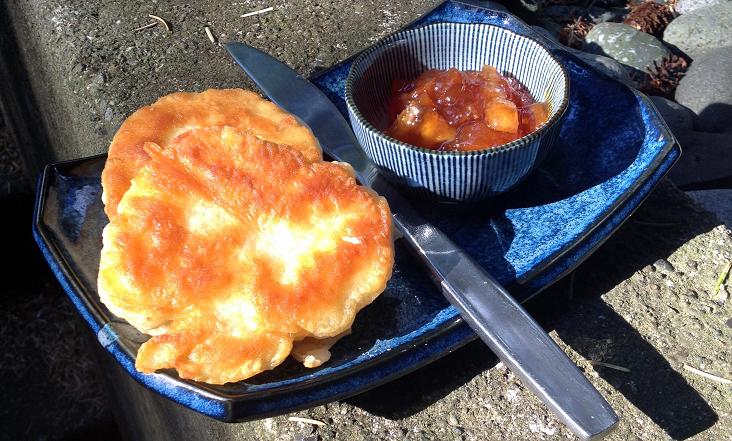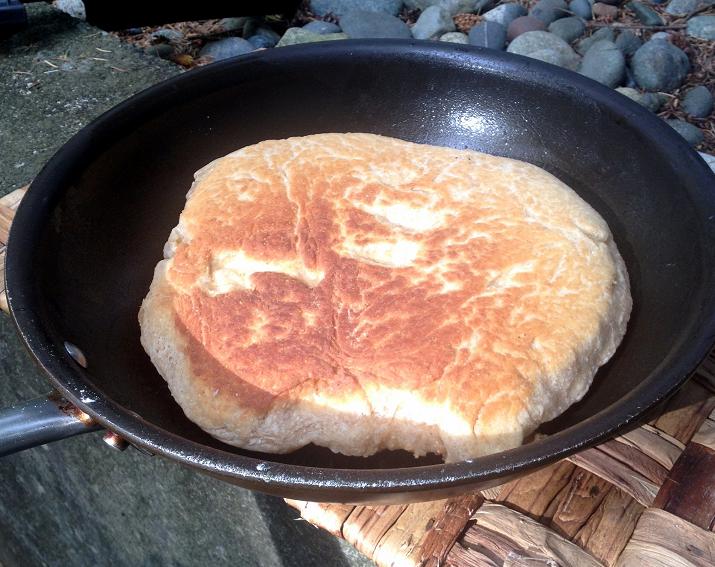
(Updated 07/04/2021 after a reader named Jane commented about soggy cakes… No one likes soggy cakes! Also long, blistering Canada Day of frying Bannock and tinkering with the traditional recipe.)
Long before Europeans brought wheat and barley to the New World, the First Nations people harvested, processed and milled flour from indigenous plant life. Stuff you’d never think could turn into flour like Cattails, acorns, mosses, lichens and ferns. These became the base for a myriad of bread and bread-like recipes that kept the natives fed even during tough seasons and droughts.
One particularly badass recipe from the Neskonlith people (one that pre-dates European contact) calls for boiling black tree lichen until it coagulates enough to form sticky, licorice-flavoured hand cakes which were seared on rocks laid in charcoal-filled pits… Yurm.
